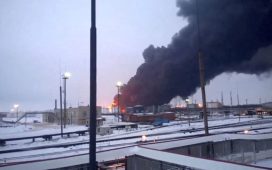Heatwaves are challenging the grid.
The future for U.S. electric utilities is under a dark cloud — a cloud generated as much by their century-plus of success as anything else.
The nation has come to feel that the supply of electricity from the grid, which is the most complex, real-time engine on earth, has a kind of elasticity; that it can accommodate more and more demand — demand not just in volume, but also in how the utilities make the electricity.
Peter Londa, president and CEO of Tantalus Systems, a Canadian company that operates primarily in the United States, helping the electric utility industry to digitize, says in a recent white paper, “The utility of the future will face a perfect storm of operational and environmental challenges.
“It is a future in which demand for power threatens to exceed supply. Electric vehicles and distributed energy resources threaten to destabilize the grid with power generated at the grid edge.”
Outages Are ‘The New Norm’
Londa also says extreme weather events threaten to make power outages “the new norm.”
Indeed, aberrant weather around the world is close to becoming the new predictable weather in its unpredictability. At this writing, Japan has had a severe heatwave, 3 feet of rain has fallen on Sydney, and Texas has had August-type heat in June.
This comes as we are on a binge of new electrification.
As Londa says in his paper, “It’s plain to see wherever we look – electric vehicle [EV] adoption, online shopping, cloud computing and server farms, computer chips embedded in every device and appliance across all industries – virtually every aspect of daily life is becoming electrified. With the continued acceleration of this trend, the United States EIA expects global energy demand to increase 47 percent in the next 30 years.
“The bottom line is that we need as much reliable electricity as possible. Because of electric vehicle adoption alone, it is estimated that U.S. power production will need to double by 2050.”
Londa sets this against the drive to decarbonize and paints a picture of a truly stressed future with colliding pressures on supply and pressures to move altogether off the carbon fuels, coal, and natural gas.
“In addition, consumer adoption of technology such as rooftop solar, home battery storage, and EVs is putting an even greater strain on a grid that is already outdated and in dire need of modernization,” Londa says. “The traditional distribution grid was never destined to absorb consumer-generated electricity at this level.”
Supply Chain Crisis Is Front-And-Center
At the United States Energy Association virtual press briefing in June (which I organize and host monthly), the supply chain crisis was front-and-center: an unscheduled addition to the woes of the industry going forward. Particularly, speakers drew attention to the disruption in the supply of transformers.
Two speakers, Ray Kowalik, president of Burns & McDonnell, the Kansas City, Missouri-based engineering, construction and architecture firm, and Rudy Garza, interim president of CPS Energy, the nation’s largest gas and electric municipal utility, which serves San Antonio, lamented the chaos that prevails in the procurement of hardware for the orderly expansion and repair of utility services.
Kowalik told reporters, “There’s no one that can predict where the future’s going because all the variables are unknown. When you are in engineering school, [you learn that] you can only solve a problem if you have as many variables as you have equations to solve it. They must match to get one answer.
“Well, what we have now are about 10,000 variables and about two equations, so there are unlimited numbers of answers. And this is just a time when people are going to have to understand that.
“If you’re trying to build a house now, you’re not going to get a fixed price. You’re not going to get a 100 percent-fixed price on anything now.”
Garza said he is trying to get 50 megawatts of battery storage and build 900 megawatts of additional solar capacity, both of which are affected by supply shortages. Going forward, he explained that while CPS Energy is holding its own and has things under control, he is squeezed by rapid growth in the San Antonio area and by pressure to close down the utility’s coal generation.
This means that CPS Energy must negotiate with new demands on its system. “I think we’ve done some pretty innovative things,” Garza said. “I personally met with the developers in San Antonio.”
He said he had told them that he wanted an equitable distribution of new demand. For example, if a developer wanted to build 1,000 homes, Garza said he had asked them to break that into, say, two groups of 500 homes, so that one developer isn’t bidding against another to get the power they need.
Garza also said he sees two challenges: one in generation and the other in resiliency. He said these were separate but vital issues.
As the summer rolls on the industry and consumers will get a better idea of the stress on the grid and of how resilient it is, because the long-range weather forecasts are that it will be extremely hot and there will be catastrophic storms.
The industry has agreed and is working towards reliable stockpiling of critical parts and materials — Garza has written to Gov. Greg Abbott proposing this for Texas, which has its own grid. The world’s greatest engine is making horrible noises under the hood.








